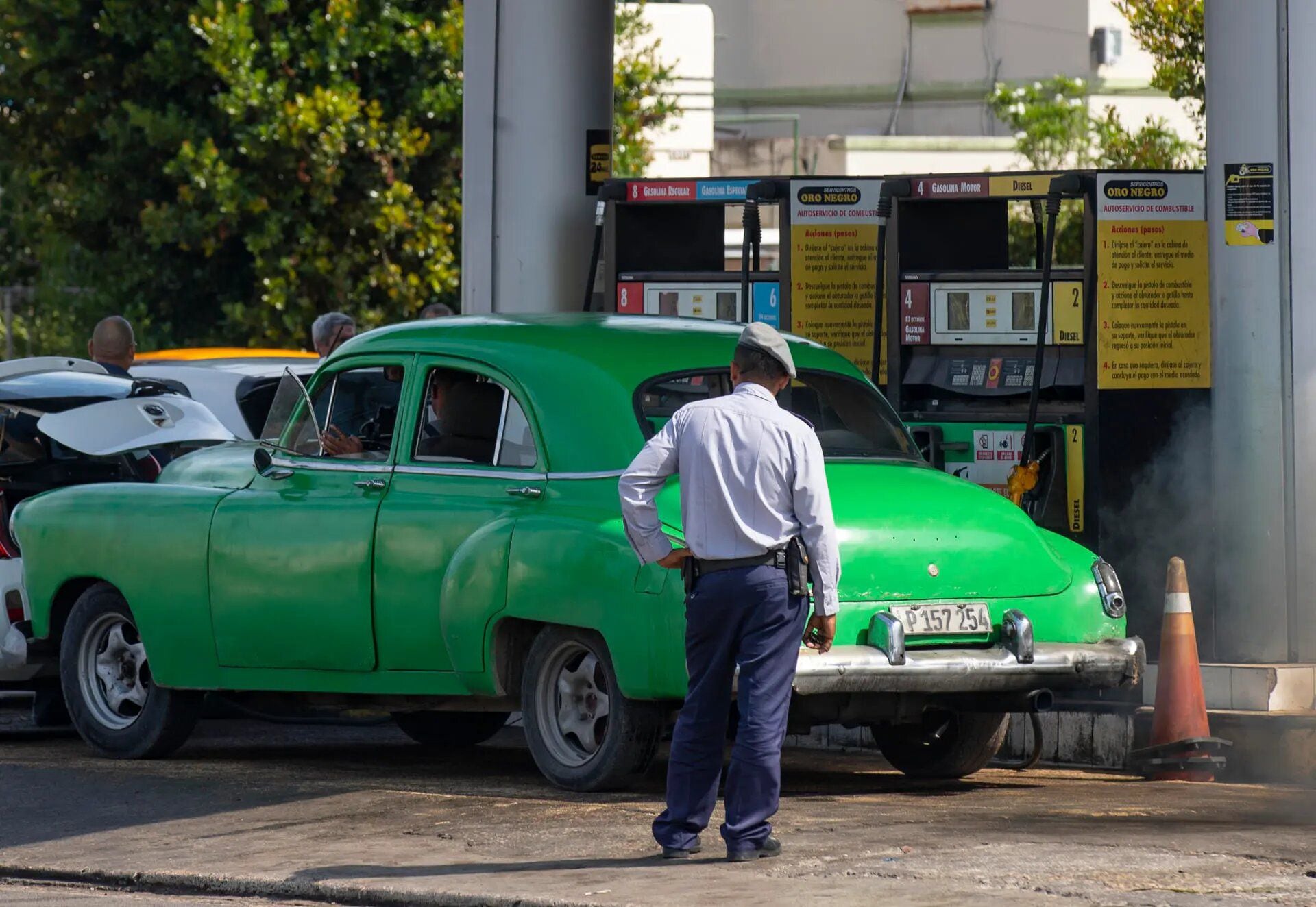
The fuel crisis in Cuba It has been two weeks without the outlook moving one iota: long lines at gas stations, especially in the capital, waiting for the precious fuel that does not arrive And it doesn’t look like it will anytime soon.
While it is true that the shortage of gasoline in Cuba, a country in a deep economic crisis, is an intermittent headache every year, this time the long lines of cars have remained.
The images have always been the same since the problem exploded: private and state cars stopped and transporters who get up early, often without the certainty that there will be diesel -used, above all, for urban buses- the next day.
The situation also worsens the other great headache for Cubans: public transportation. The stops in Havana seem crowded with people, especially at times of greatest demand (morning and afternoon).
The few guaguas (buses) that circulate in the capital -many times, in terrible conditions- cannot cope. Official data shows that more than half of the fleet (just under 900 vehicles) does not work and the lack of fuel worsens this already weak situation.
Private taxis may be an option, but their rates have also risen along with the fuel shortage and a trip can exceed 100 Cuban pesos (4 dollars, according to the official exchange rate).
In an article published, exactly two weeks ago, by the official newspaper Granma – and later deleted – it was reported that the Government of Havana adopted measures to face the shortage. Among them readjust the number of liters of gasoline “assigned to vital activities”
Also “The sale of fuel will be evaluated according to the type of vehicle, with limits of liters established for each category, although the quotas assigned to each client according to their means of transport are not specified.”
supplier countries
Two weeks later without a government pronouncement on the crisis, the president of Cuba, Miguel Díaz-Canel, assured on Friday that the shortage responds to the “breach” of supplying countries that are also going through a “complex energy situation”.
“It is not (due to) insufficiency, nor problems of the institutions, but due to non-compliance of the countries that supply us”Díaz-Canel specified in a fragment of a few minutes on the noon news on state television.
The president acknowledged that “From between 500 and 600 tons per day, now there are 400 tons for all activities (transport and economy).”
He also acknowledged that he is not “Of course, how we are going to get out (of the situation).”
According to the president, a ship with fuel “it broke in Santiago de Cuba (east), prevented it from being downloaded on time and that has caused a delay.”
Availability has been directed to distribution for electricity generation “to avoid blackouts”indicated Díaz-Canel, who added that “There is now a high level of thermoelectric plants under maintenance.”
Cuba imports practically all the oil it consumes and mostly uses this fuel to generate energy. Venezuela, along with Russia, is one of the main suppliers of crude oil, but with the crisis it reduced the amount sent to the island.
blackouts
Added to the new chapter of the current energy crisis in Cuba is a permanent element: blackouts due to deficits in electricity generation.
According to Díaz-Canel, the increase in cuts in recent days is due to the fact that “Diesel has not arrived” to an important group of generating plant blocks.
In recent days, the state company Unión Eléctrica reported damages of more than 15%. These figures are still far from the levels of last year, when they exceeded 50% in several areas of the country with blackouts of more than 10 hours.
However, they are well above what was registered at the end of 2022 and in the first month of 2023. For this Saturday, the cuts will affect 23% of the island.
The power deficit has increased since late February just after four reported failures in the national power grid that left more than half the country without service.
The national electrical system is going through a precarious situation with almost all its terrestrial thermoelectric plants with more than 30 years of use, the lack of investment and the fuel deficit.
The Cuban government scheduled maintenance tasks in the first months of the year to face July and August in better conditions, the period of greatest demand.
It also leased eight floating power plants to generate power in an attempt to alleviate the situation.
Source: EFE
Source: Gestion
Ricardo is a renowned author and journalist, known for his exceptional writing on top-news stories. He currently works as a writer at the 247 News Agency, where he is known for his ability to deliver breaking news and insightful analysis on the most pressing issues of the day.












